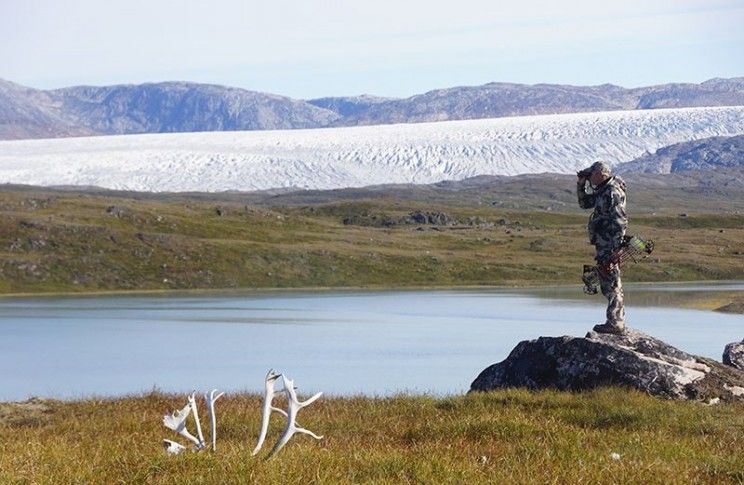About Greenland for musk ox and caribou Bowhuntinggreenland expeditions
Greenland has attracted pioneers for more than 4500 years. Nature is powerful and makes us feel small, its silence leads us back to who we are and where we come from. Culturally, the extreme conditions the population has lived under, and the fantastic environment for human existence provided by nature characterize Greenland. Living on the terms of the wilderness, generations have developed a strong sense of community and enjoyment of company.
Icebergs and the inland ice are probably the most famous aspects of Greenlandic nature - and with good reason. Colossal blue and white icebergs in fantastic shapes float on the deep blue sea. The inland ice - a truly incomprehensible sheet of ice - is up to 3½ kilometers thick, which seems immovable but, as the roaring and creaking reveals, is in fact under constant movement and change. The Ice Cap covers a Ice continent of 685.000 square miles, about 80% of Greenland, but the ice is not all. Greenland has the oldest mountains on the planet, up to 3,5 billion years old located inside our hunting area. Wild arctic flowers, long fjords, precipitous cliffs, hot springs, infinite sky with air so fresh and rivers containing the finest drinking water. It is easy to see why it is not just people who enjoy living here. Animals also thrive here - on land and at sea - musk oxen, caribou, polar bears, whales and seals.
Weather
Greenland has an average temperature that does not exceed 10° C (50° F) in the warmest summer months. In the southern part of the country and the innermost parts of the long fjords, the temperature can, however, rise to more than 20° C (68° F) in June, July or August. The sea around Greenland affects the climate on land. The stretches of coastline close to the open sea, in particular, are cooled by the sea. Therefore during the summer months it is warmest and driest on land closest to the ice sheet. In all parts of the country the weather is locally changeable and can vary from fjord to fjord and from one valley to the next. The air is generally very dry in Greenland, and because of this low humidity the low temperatures do not feel as cold as you might expect.
In general
The majority of Greenland's nature is actual wilderness, with few or no paths, numerous mountains, rivers and glaciers. The very clear air means that it can be hard to judge distances; it is often a lot further to a given point than you might think.
Language
Kalaallisut - "the Greenlanders' language" belongs to the Inuit-Aleut family of languages that is spoken by some 80,000 Inuit’s in Alaska, Canada and Greenland. Danish is the first foreign language learned in Greenland's schools, and many young people also speak good English.

